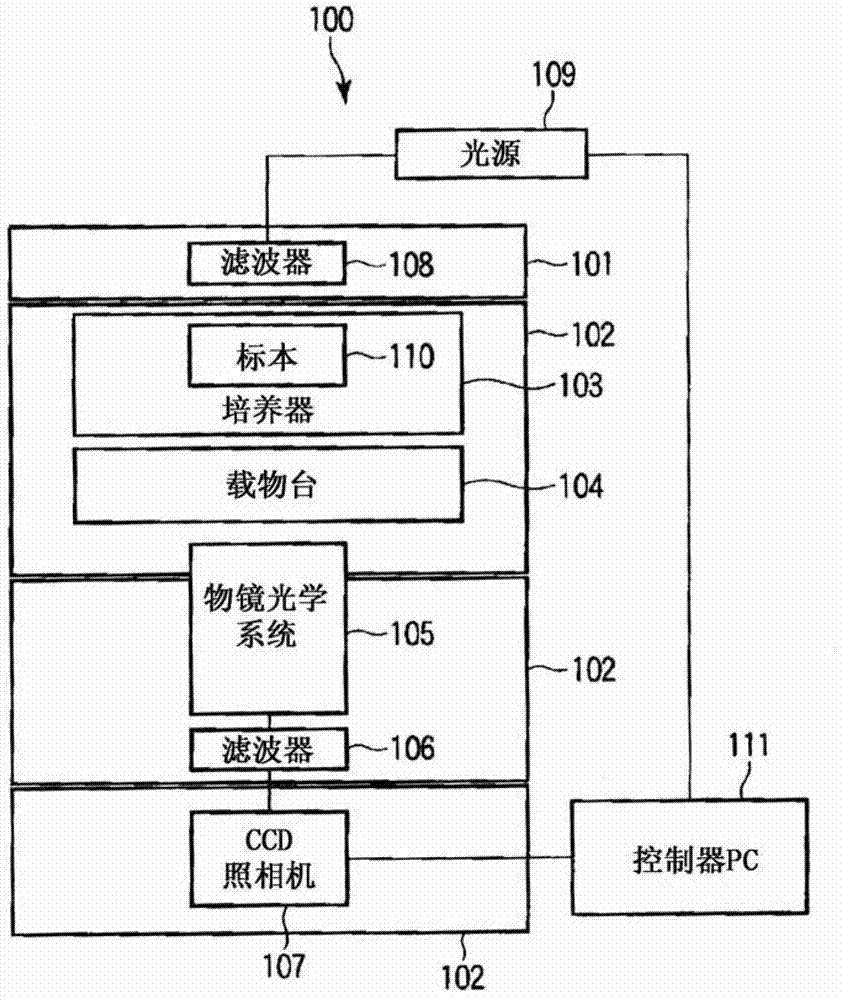Method for monitoring state of differentiation in stem cells
A stem cell and state technology, applied in the field of monitoring the differentiation state of stem cells, can solve problems such as loss of pluripotency, inability to continuously investigate cell state, and judge differentiation state
- Summary
- Abstract
- Description
- Claims
- Application Information
AI Technical Summary
Problems solved by technology
Method used
Image
Examples
preparation example Construction
[0098] 1. Preparation of Stem Cells for Monitoring
[0099] In the present invention, according to known techniques, the promoter region of the marker gene is fused with the luciferase gene (reporter gene), and the fusion gene is introduced into stem cells to prepare stem cells for monitoring.
[0100] A known promoter region may be used for the "promoter region of a marker gene", or it may be cloned based on the nucleotide sequence of a known marker gene. For example, the promoter region of Nanog is described in T Kuroda et al., Molecular and Cellular Biology (2005 vol.25, No.6 p2475-2485); the promoter region of Oct is described in SOkumura-Nakanishi et al., The journal of Biological Chemistry (2005 vol.280, No7p5307-5317); the promoter region of Nestin is described in L Cheng et al., FEBS Letters 2004 565p195-202.
[0101]Commercially available genes can be used for the "luciferase gene", for example, Eluc luciferase (green), CRB luciferase (red), and Renilla luciferase (b...
Embodiment 1
[0141] Example 1: Examples using undifferentiated markers
Embodiment 1-1
[0142] Example 1-1: Observation and analysis of transiently expressing cells
[0143] (1) Production of ES cells into which a fusion gene of the promoter region of the undifferentiation marker gene and the luciferase gene was introduced
[0144] Regarding the cloning of the Nanog gene promoter region, refer to the non-patent literature "T Kuroda et al., Molecular and Cellular Biology 2005 vol.25, No. 6, p2475-2485" to obtain the promoter sequence.
[0145] The sequence of the Nanog gene promoter region was obtained using mouse genome DNA as a template. As primers for amplifying the Nanog gene promoter region, the following primers were used.
[0146] Forward primer: CTACTCGAGATCGCCAGGGTCTGGA (SEQ ID NO: 1)
[0147] Reverse primer: CTACTCGAGCGCAGCCTTCCCACAGAAA (SEQ ID NO: 2).
[0148] The obtained Nanog gene promoter sequence was inserted into pGL4-basic vector (Promega) to create "Nanog gene expression-specific luminescence vector pNanog-GL4".
[0149] For culturing ES cel...
PUM
| Property | Measurement | Unit |
|---|---|---|
| diameter | aaaaa | aaaaa |
Abstract
Description
Claims
Application Information
 Login to View More
Login to View More - R&D
- Intellectual Property
- Life Sciences
- Materials
- Tech Scout
- Unparalleled Data Quality
- Higher Quality Content
- 60% Fewer Hallucinations
Browse by: Latest US Patents, China's latest patents, Technical Efficacy Thesaurus, Application Domain, Technology Topic, Popular Technical Reports.
© 2025 PatSnap. All rights reserved.Legal|Privacy policy|Modern Slavery Act Transparency Statement|Sitemap|About US| Contact US: help@patsnap.com



